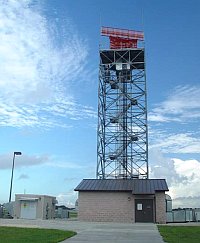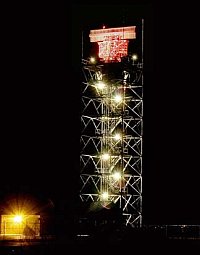Airport Surveillance Radar (ASR-11)

Abilene ASR-11 radar antenna

Abilene ASR-11 radar antenna
Program
Airport Surveillance Radar (ASR-11) is an integrated primary and secondary radar system being deployed at terminal air traffic control sites. It interfaces with both legacy and digital automation systems and provides six-level national weather service calibrated weather capability that will result in significant improvement in situational awareness for both controllers and pilots.
Status
The ASR-11 program has completed actions to close all identified risks from the solution implementation phase and is now in full deployment mode.
Primary and Secondary Surveillance Radar
The ASR-11 system consists of two integrated electronic subsystems: primary surveillance radar and secondary surveillance radar.
How it works
The primary surveillance radar uses a continually rotating antenna mounted on a tower to transmit electromagnetic waves that reflect, or backscatter, from the surface of aircraft up to 60 miles from the radar. The radar system measures the time required for a radar echo to return and the direction of the signal. From this, the system can then measure the distance of the aircraft from the radar antenna and the azimuth, or direction, of the aircraft in relation to the antenna. The primary radar also provides data on six levels of rainfall intensity. The primary radar operates in the range of 2700 to 2900 MHz. The transmitter generates a peak effective power of 25 kW and an average power of 2.1 kW. The average power density of the ASR-11 signal decreases with distance from the antenna. At distances of more than 43 feet from the antenna, the power density of the ASR-11 signal falls below the maximum permissible exposure levels established by the Federal Communications Commission.
The secondary radar uses a second radar antenna attached to the top of the primary radar antenna to transmit and receive area aircraft data for barometric altitude, identification code, and emergency conditions. Military, commercial, and some general aviation aircraft have transponders that automatically respond to a signal from the secondary radar by reporting an identification code and altitude. The air traffic control uses this system to verify the location of aircraft within a 60-mile radius of the radar site. The beacon radar also provides rapid identification of aircraft in distress. The secondary radar operates in the range of 1030 to 1090 MHz. Transmitting power ranges from 160 to 1500 watts.
